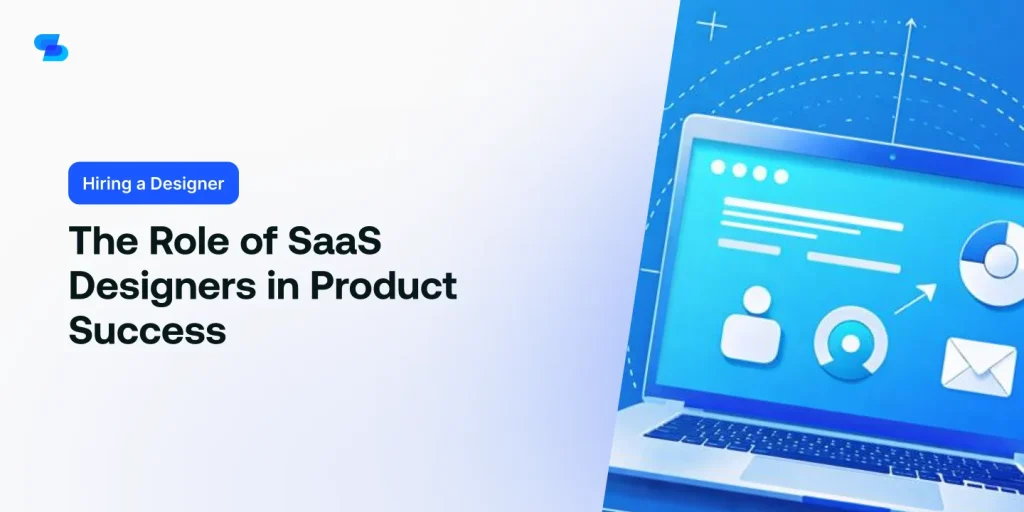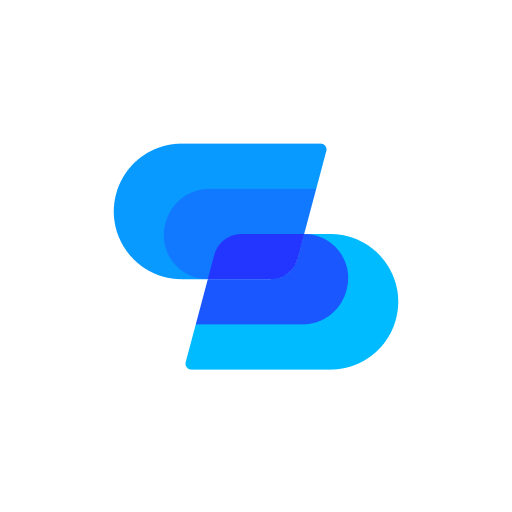You might think SaaS designers are just prettying up interfaces, but you’d be vastly underestimating their impact. These professionals are the architects of user experience, transforming complex systems into intuitive, efficient tools. They’re not just making things look good; they’re solving problems, streamlining workflows, and directly influencing your product’s success. By blending aesthetics with functionality, SaaS designers shape how users interact with and perceive your product. Their work can make or break user adoption, satisfaction, and ultimately, your bottom line. But how exactly do they achieve this, and what strategies do they employ to guarantee product success?
Understanding SaaS Design Principles
SaaS designers consistently grapple with unique challenges that set their work apart from traditional software design. You’ll find that the principles guiding SaaS design are rooted in accessibility, scalability, and continuous improvement. Unlike one-time software installations, SaaS products demand a design approach that anticipates constant updates and evolving user needs.
You must prioritize intuitive interfaces that cater to diverse user backgrounds. Remember, your design isn’t just about aesthetics; it’s about creating a seamless user experience that encourages long-term engagement and subscription renewals. Think modular – your design should allow for easy feature additions and modifications without disrupting the core user experience.
Data-driven design is essential in SaaS. You’ll need to incorporate analytics tools and user feedback mechanisms into your design, enabling continuous refinement based on real-world usage patterns. Don’t forget about customization – your design should be flexible enough to accommodate different user preferences and business needs.
Security and data privacy must be woven into every aspect of your design. As you craft user flows, always consider how to protect sensitive information without compromising usability. By mastering these SaaS-specific design principles, you’ll create products that not only look good but drive long-term business success.
User Experience and Interface Design
Building on these foundational principles, you’ll find that user experience (UX) and interface design are the cornerstones of successful SaaS products. As a SaaS designer, your role is to create intuitive, efficient, and enjoyable interactions that keep users engaged and satisfied.
Start by understanding your users’ needs, pain points, and workflows. Conduct user research, create personas, and map out user journeys to inform your design decisions. Focus on simplicity and consistency across your interface, ensuring that users can easily navigate and accomplish their tasks.
Don’t underestimate the power of visual design. A clean, aesthetically pleasing interface can greatly enhance user perception and adoption of your SaaS product. Use color, typography, and imagery strategically to guide users’ attention and convey information hierarchy.
Remember that UX design extends beyond the visual interface. Consider the entire user journey, from onboarding to advanced features. Implement progressive disclosure to avoid overwhelming new users while providing depth for power users.
Continuously gather user feedback and analyze usage data to identify areas for improvement. Embrace an iterative design process, refining your UX based on real-world insights.
Data Visualization in SaaS Products
Data visualization is your secret weapon in SaaS design.
You’ll captivate users and boost their understanding by transforming complex data into intuitive, visually appealing representations.
Enhancing User Experience
Striking visuals can transform complex data into actionable insights, empowering users to make informed decisions at a glance. As a SaaS designer, you’re not just creating pretty charts; you’re crafting a narrative that guides users through their data journey. Your designs should illuminate patterns, highlight anomalies, and reveal trends that might otherwise remain hidden in raw numbers.
To enhance user experience, focus on intuitive interactions. Implement hover effects that reveal additional information, and use color coding to differentiate data categories.
Don’t overwhelm users with too much information at once. Instead, layer your visualizations, allowing users to drill down for deeper insights. Consider implementing customizable dashboards, giving users the power to prioritize the metrics that matter most to them.
Simplifying Complex Information
Three key principles guide effective data visualization in SaaS products: simplicity, clarity, and relevance. As a SaaS designer, you’re tasked with transforming complex datasets into digestible visual representations. Your goal? To help users quickly grasp insights and make informed decisions.
Simplicity doesn’t mean oversimplification. It’s about stripping away unnecessary elements and focusing on the core message. You’ll need to identify the most important data points and present them in a clean, uncluttered format.
Clarity demands that you choose the right type of visualization for each dataset. Bar charts for comparisons, line graphs for trends, or heat maps for density – your choice can make or break user understanding. Color, typography, and layout all play vital roles in enhancing clarity.
Relevance is about context. You must understand your users’ needs and tailor visualizations accordingly. What questions are they trying to answer? What actions will they take based on this data? By aligning your designs with user objectives, you’ll create visualizations that aren’t just pretty, but actionable.
Streamlining Complex Workflows
You’re facing a vital challenge: transforming intricate SaaS workflows into seamless user experiences.
By simplifying interfaces and optimizing task sequences, you’ll eliminate confusion and boost productivity for your users.
Don’t forget to enhance collaboration features, as they’re key to revealing the full potential of your SaaS product and fostering team synergy.
Simplifying User Interfaces
Streamlining complex workflows is the hallmark of a skilled SaaS designer, transforming convoluted processes into intuitive, user-friendly interfaces. As you tackle the challenge of simplifying user interfaces, you’re not just rearranging elements; you’re reimagining the entire user experience.
Start by ruthlessly eliminating unnecessary features. It’s tempting to cram in every possible function, but remember: less is more. Focus on core functionalities that deliver the most value to your users. Embrace white space and use it strategically to guide the user’s eye and reduce cognitive load.
Implement progressive disclosure techniques to reveal information and options only when needed. This approach prevents overwhelming users with too many choices upfront. Utilize clear, consistent iconography and intuitive navigation patterns to help users quickly find what they need.
Don’t forget the power of customization. Allow users to tailor their interface to their specific needs, but make it optional. A well-designed default experience should work for most users out of the box.
Optimizing Task Sequences
Every click matters when you’re optimizing task sequences, transforming complex workflows into seamless journeys that users can navigate effortlessly.
As a SaaS designer, your role is to dissect intricate processes and reassemble them in the most efficient order possible. Start by mapping out the current workflow, identifying redundancies and bottlenecks that slow users down. Then, ruthlessly eliminate unnecessary steps and consolidate related actions.
Consider the cognitive load at each stage of the sequence. Can you reduce decision fatigue by offering smart defaults or contextual suggestions? Implement progressive disclosure to reveal information and options only when they’re relevant, keeping the interface clean and focused.
Don’t forget about micro-interactions – those small, satisfying moments that provide feedback and guide users through the process.
Enhancing Collaboration Features
Collaboration features are the lifeblood of modern SaaS platforms, transforming isolated tasks into synchronized symphonies of productivity. As a SaaS designer, you’re tasked with crafting these features to streamline complex workflows and boost team efficiency.
Start by identifying pain points in your users’ collaborative processes. Are they struggling with version control? Drowning in endless email threads? Address these issues head-on with intuitive solutions. Implement real-time editing capabilities, allowing multiple users to work on the same document simultaneously. Introduce smart commenting systems that link discussions directly to relevant content.
Don’t forget about asynchronous collaboration. Design features that enable seamless handoffs between team members across different time zones. Incorporate task assignment tools, progress tracking, and automated notifications to keep everyone in the loop.
Security is paramount. Guarantee your collaboration features include robust permission settings and data encryption. Balance accessibility with protection to maintain user trust.
Collaborating With Development Teams
While designers often dream up groundbreaking ideas, they’ll need to work hand-in-hand with developers to turn those visions into reality. To foster effective collaboration, you must bridge the gap between design and development. Start by involving developers early in the design process. Share your concepts, wireframes, and prototypes to get their input on technical feasibility. This early engagement can prevent costly redesigns later.
Learn to speak the developer’s language. Familiarize yourself with basic coding concepts and technical constraints. This knowledge will help you create designs that are both innovative and implementable. Be prepared to compromise when necessary, but always advocate for the user experience.
Establish clear communication channels and regular check-ins. Use tools like Slack, Jira, or Trello to keep everyone aligned. Document your design decisions and rationale thoroughly, making it easier for developers to understand your intent.
Embrace an iterative approach. Be open to feedback and willing to refine your designs based on technical insights. Remember, the goal is to create a product that’s both visually appealing and functionally robust.
Adapting to Evolving User Needs
In the fast-paced SaaS landscape, you’ll need to stay on your toes to keep up with your users’ ever-changing demands and expectations. As a SaaS designer, your role isn’t just about creating beautiful interfaces; it’s about anticipating and responding to evolving user needs.
To adapt effectively, you must become a master of user research. Conduct regular surveys, analyze usage data, and engage in one-on-one interviews with your customers. Don’t just rely on quantitative data; dig deep into qualitative insights to uncover hidden pain points and desires.
Embrace an iterative design process. Release features quickly, gather feedback, and refine your designs based on real-world usage. Be prepared to pivot when necessary, even if it means scrapping ideas you’ve invested time in.
Stay ahead of industry trends. What works today might be obsolete tomorrow. Keep an eye on emerging technologies and user behavior shifts that could impact your product’s relevance.
Measuring Design Impact on ROI
Savvy SaaS designers consistently tie their work to tangible business outcomes, proving their value through measurable impact on ROI.
You’ll need to establish clear metrics that link design improvements to financial gains. Start by tracking user engagement, conversion rates, and customer retention. These indicators directly correlate with revenue growth and cost reduction.
Implement A/B testing to quantify the impact of design changes. Compare user behavior, satisfaction scores, and revenue generated between different versions. You’ll gain concrete evidence of how your design decisions affect the bottom line.
Don’t overlook the power of user feedback. Collect and analyze qualitative data to supplement your quantitative metrics. This holistic approach will help you identify design elements that resonate with users and drive business success.
Collaborate with product managers and finance teams to align your design goals with overall business objectives. By speaking their language and demonstrating how your work contributes to key performance indicators, you’ll elevate your role from mere pixel pusher to strategic partner.
To Wrap Up
You’re at the forefront of product success as a SaaS designer. Your ability to craft intuitive interfaces, simplify complex workflows, and leverage data visualization is essential.
Don’t underestimate your impact on user satisfaction and business growth. Stay adaptable, collaborate closely with development teams, and continuously measure your design’s ROI.
By focusing on user-centric principles and evolving needs, you’ll drive innovation and guarantee your product stays ahead in the competitive SaaS landscape.

